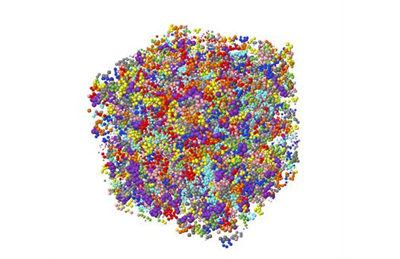Additional Information
The Commission held in 2001 the conference STATPHYS 21 in Cancun/Mexico from July 15-20, 2001. This is the only “type – A” conference that the Commission C3 sponsors, and it is held in a three years cycle. While the “normal” attendance to STATPHYS Conferences is about 1000 to 1200 participants, and in 1998 (in Paris) even the exceptionally high number of 1800 participants was counted, this time the number of participants decreased to about only 800, which was expected because flight tickets to Mexico are expensive from almost all countries of the world. Originally (in 1998, when Mexico was chosen) it had been planned to hold the conference at UNAM Campus in Mexico City, but a violent student strike, which lasted for more than a year and created a lot of disarray had made the shift of the conference to Cancun necessary.
The conference program consisted of 7 plenary talks (including the 2 Boltzmann Award lectures), 60 invited talks (of 30 minutes duration each) 200 oral contributed talks (of 15 minutes duration each), and about 500 poster contributions, which were presented in 3 poster sessions. Both invited and contributed oral talks were held in four parallel sessions. The facilities of the Cancun Convention Center, where all 4 conference rooms, the poster hall and the lobby where coffee and soft drinks were served throughout, allowed to switch between sessions very easily, and were also very favorable for an intensive interaction among the attending scientists. Thanks to the efforts made by the International Advisory Committee and the Steering Committee, the conference succeeded in maintaining a very high scientific standard, and the most recent advances from the 12 topical categories were presented and discussed.
These topics were “1. Rigorous results and exact solutions, general aspects of statistical physics; 2. Phase transitions and critical phenomena (equilibrium and non-equilibrium; renormalization group); 3. Non-equilibrium process (transport theory, relaxation phenomena, random processes); 4. Pattern formation in glass systems far from equilibrium (growth processes, chemical reactions, hydrodynamic instabilities, granular flows); 5. Dynamical systems and turbulence; 6. Liquid matter (atomic, molecular and ionic fluids, freezing; metastable liquids; structure and dynamics of granular matter); 7. Soft condensed matter (colloids, polymers, liquid crystals, microemulsions, foams, membranes, etc.; Interfaces, wetting confined systems; 9. Quantum-mechanical problems (strongly correlated fermions; Bose-Einstein condensation; mesoscopic quantum phenomena, etc.; 10. Disordered systems (glass transition, localization, etc.); 11. Biologically motivated problems (protein folding models; neural networks; molecular motors; etc.); 12. Other applications of statistical physics (econophysics, earthquake models, traffic flows, population dynamics, astrophysical applications, etc.).”
A particular highlight of the conference was the Boltzmann Medal Ceremony, in which Berni J. Alder received a Boltzmann Medal for “inventing the technique of molecular dynamics simulation and showing that with such “computer experiments” important discoveries in the field of statistical mechanics can be made, in particular the melting/crystallization transition of hard spheres and the long-time decay of auto-correlation functions in fluids”, and Kyozi Kawasaki received a Boltzmann Medal for “his contribution to our understanding of dynamic phenomena in condensed matter systems, in particular the mode-coupling theory of fluids near criticality, and nonlinear problems, such as critical phenomena in sheared fluids and phase separations”. Finally, it should be emphasized that the presence of the attendees of the scientific sessions was excellent throughout the conference, despite the many other attractions that a resort place such as Cancun was offering!
In addition to the STATPHYS 21 conference itself, 7 satellite conferences were held (4 in the preceding week, in Oaxaca, Merida, and two in Cocoyoc, 3 in the following week, including one in Cancun, another one in La Havana/Cuba, and the last one in Athens, Georgia, USA). These satellite conferences contributed to make the STATPHYS 21 even more rewarding to the many participants that traveled from all over the world to Mexico at this occasion. In conclusion of this report, it can again be said that STATPHYS 21 proved that statistical physics is a very active and rapidly developing field, which many relations to other fields of physics. This fact was also apparent from the many exciting new results, that were reported both in the contributed and invited paper at all these conferences. Here we only mention the plenary talks at STATPHYS 21. Mezard reported on progress achieved with the understanding of the glass transition, Chen described applications of the concepts of self-organized criticality, Mukamel reported progress of understanding the nature of phase transitions in biopolymers, and Weitz described astonishing scaling properties in the aging dynamics of strongly inhomogeneous materials. Finally, a particular highlight was the talk by Ketterle on Bose-Einstein-condensation (note that his work won him the 2001 Physics Nobel prize!).
Kurt Binder, C3 Chair
Website for the Commission on Statistical Physics.





